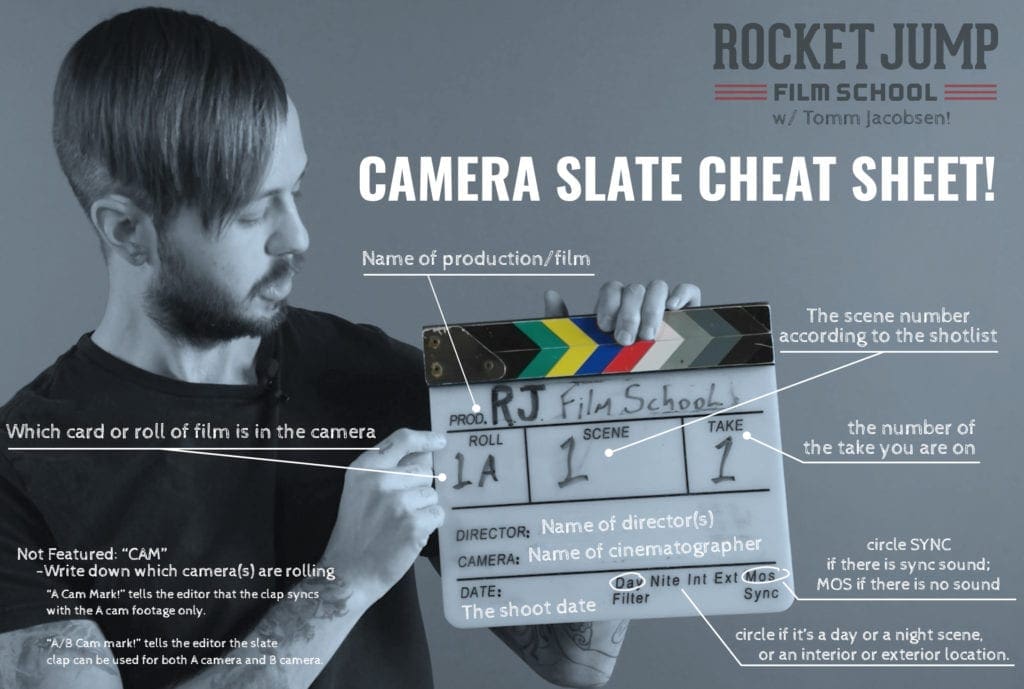Slating is very important. Although it may seem somewhat archaic with today’s technology, there’s a reason why we still do it and we will continue to do so for years to come. The 2nd AC will always do the slating for the camera they’re a part of. If you’re interested in seeing what else a 2nd AC does (because it’s a lot more than just using a slate) check out our previous article! On the other hand, if you’re looking for a 2nd AC in your area check out our Crew List. Now let’s get started!
Why We Slate
The two basic why we slate are:
- Provide information about the take to the editors
- Provide the guidelines for the editors to sync audio with the video
A production will do dozens of shots in a single day, each shot will have multiple takes (generally). This will become very overwhelming very quickly if there wasn’t a way to track everything. This is where the slate comes in! Every take will be slated in some form or the other. Whether is a head slate, tail slate, or an ID, the information will be there for the editors somewhere. While slating, you’ll work very closely with the script supervisor to make sure all the information given to the editors are the same. Some general information that is on every slate are:
- Production name
- Camera roll number
- Shot
- Take
- Director’s name
- Cinematographer’s name
Useful Resources
This is from our previous article but it does come in handy whenever slating is the focus of a conversation!

If you want to learn more from these guys, check them out!
Toughest Shot
If you have any questions feel free to ask me in the comments. What I want to ask you though is; what was the toughest shot you’ve ever had to slate and how did you do it? Share your story!
